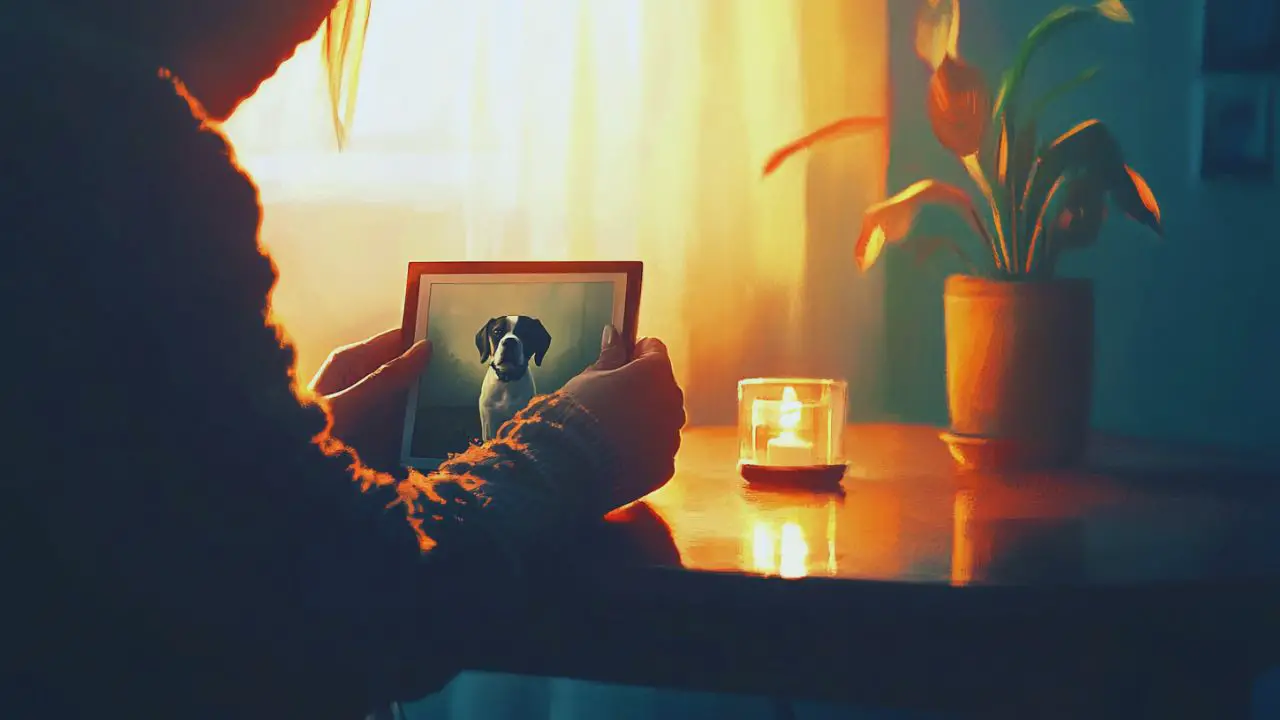The journey through pet loss grief is deeply personal, yet understanding its common stages can help us navigate this challenging emotional landscape.
While everyone experiences grief differently, recognizing these stages can provide comfort in knowing that our feelings are normal and valid.
Denial and Shock
The initial response to pet loss often includes feeling numb or unable to accept the reality of the situation.
You might find yourself expecting to hear their pawsteps or waiting for them in their usual spots.
This psychological protection helps us process the loss gradually rather than becoming overwhelmed all at once.
Anger and Guilt
Feelings of anger might emerge, directed at veterinarians, circumstances, or even ourselves for decisions we had to make.
Guilt often accompanies anger, especially in cases involving euthanasia or accidents.
These emotions, though painful, are natural reactions to losing someone we love deeply.
Bargaining and “What Ifs”
Many pet parents experience a period of questioning past decisions and imagining different outcomes.
Thoughts like “if only we had noticed sooner” or “what if we had tried another treatment” are common.
This stage helps us process our role in our pet’s life and death, though it can be emotionally exhausting.
Depression and Loneliness
The absence of daily routines and physical presence of our pet often triggers deep sadness.
Empty spaces in our homes and hearts can feel overwhelming during this stage.
This profound sadness honors the depth of our bond and the significance of our loss.
Physical Manifestations
Grief can manifest physically through sleep disturbances, changes in appetite, or fatigue.
Some people experience anxiety or panic when reminded of their loss.
These physical symptoms usually ease as we move through our grief journey.
Social Impact
Well-meaning friends might not understand the depth of pet loss grief.
Finding support among other pet parents who understand can be particularly healing.
It’s okay to seek space from those who diminish your grief or rush your healing.
Daily Adjustments
Simple tasks like feeding times or walking routines can trigger waves of grief.
The silence in previously active spaces might feel deafening.
Gradually, these painful reminders become opportunities for precious memories.
Moving Toward Acceptance
Acceptance doesn’t mean forgetting or “getting over” the loss of our beloved pet.
This stage involves finding ways to honor their memory while continuing our own life journey.
Small moments of joy begin to return, though twinges of grief may still arise.
Finding New Meaning
Many people discover deeper appreciation for the human-animal bond through their grief.
Some find purpose in helping other animals or supporting fellow grieving pet parents.
The love we shared with our pets often inspires positive changes in our lives.
The Path Forward
Healing isn’t linear, and we may revisit different stages of grief over time.
Special dates, photographs, or memories might temporarily intensify our grief.
Each person’s timeline for processing loss is unique and deserves respect.
Conclusion
Understanding the stages of pet loss grief helps validate our experiences and emotions during this challenging journey.
Remember that moving through these stages isn’t a linear process, and there’s no “right” way to grieve the loss of a beloved pet.
Your grief reflects the depth of your love, and taking time to honor each stage is part of healing.
Be gentle with yourself as you navigate this emotional landscape, knowing that your feelings are valid and shared by many others.
Share this post to help others understand that their pet loss grief journey is normal and valid. Sometimes knowing we’re not alone in our feelings can provide comfort during difficult times. 🐾 #PetLoss #GriefJourney #PetGrief
SHARE now with your friends!
- Hero Farm Dog Survives Epic Battle with Coyote Pack - December 9, 2024
- The 10-Minute Bedtime Routine That Changed My Dog’s Sleep Forever - November 29, 2024
- Creating a Safe Space for Nervous Pets: Your Guide to Pet-Friendly Havens - November 25, 2024

